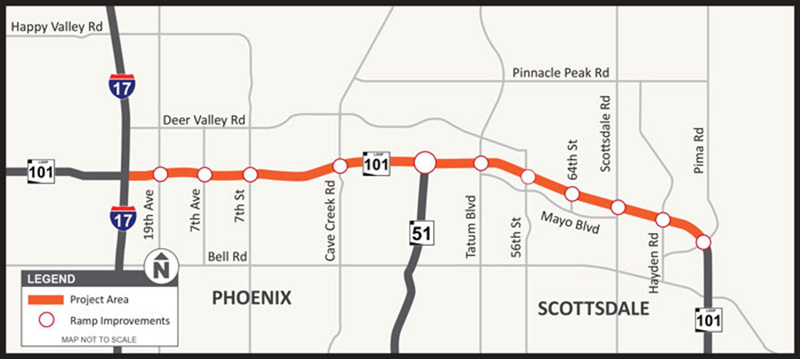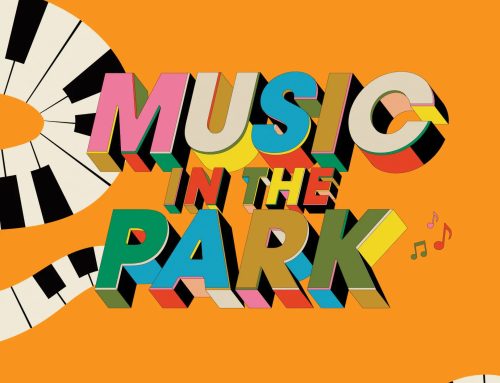Two of the Loop 101 (Pima Freeway) ramps at Seventh Avenue in Phoenix are going to be closed through March to allow work to advance on the Arizona Department of Transportation’s freeway widening project in the north Valley. The westbound Loop 101 off-ramp and eastbound on-ramp at Seventh Avenue are scheduled to reopen in March. ADOT started the $185 million project to add lanes and make other improvements along 13 miles of Loop 101 between Interstate 17 and Pima Road. The entire project is scheduled for completion in early 2021.
The westbound on-ramp and eastbound off-ramp at Seventh Street closed previously as part of the project. They also are scheduled to reopen in March. The ramp closures allow crews to widen bridges and reconstruct ramps between Seventh Avenue and Seventh Street to accommodate additional lanes.
Drivers on westbound Loop 101 can exit at Seventh Street and enter westbound Loop 101 at Seventh Avenue via the westbound frontage road (Beardsley Road), while eastbound Loop 101 drivers can exit at Seventh Avenue and enter at Seventh Street via the eastbound frontage road.
Major elements of this project include:
• Adding one general purpose lane in each direction between I-17 and Pima
• Adding an auxiliary lane in each direction between Seventh Street and Cave Creek Road
• Constructing a new overpass structure at the future Miller Road alignment
• Modifying freeway ramps and frontage road connections at 11 interchanges
Additional components include construction of noise or retaining walls where warranted, improvements to drainage and new rubberized asphalt resurfacing and pavement markings.
This project is utilizing the design-build (D/B) method of delivery to help reduce the overall project timeline. This delivery method differs from the more traditional design-bid-build approach in which the project is completed in two phases (designed and then constructed).
The D/B method involves pairing civil engineering firms with construction contractors to create “design builders” who work synergistically from beginning to end. This creates more opportunities for innovation and can reduce costs. The D/B method of delivery is most advantageous when transportation improvements are needed immediately to reduce high traffic volume or chronic congestion. For more information on the D/B method, go to azdot.gov/node/7485.
To learn more about these improvements, please visit azdot.gov/Loop101Improvements.





